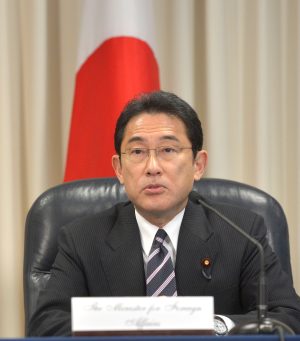Now that Kishida Fumio has been re-elected as the Japanese prime minister with a clear majority, there are many challenges that he and his ruling coalition face.
First, there is an uphill task in the economic realm, with the pandemic hitting the Japanese economy very badly. In 2020, the country’s GDP contracted by 4.8 percent. The IMF recently cut its growth forecast for Japan’s GDP this year, dropping it to just 2.4 percent. Japan is an export-dependent economy and hence the hit has been severe. Japanese supply chains in Southeast Asia and those in China have been severely impacted.
Second, on the international front, the challenge is from China, which has upped the ante, of late. During his speech at the 100th anniversary of the founding of the Chinese Communist Party, President Xi Jinping warned that foreign powers will “get their heads bashed” if they attempt to bully or influence China. Beijing has also been sending fighter aircraft into Taiwan’s Air Defense Identification Zone (ADIZ), exacerbating tensions in the region and drawing in responses from U.S. President Joe Biden, who has promised to defend Taiwan. Meanwhile, it has also emerged that U.S. troops are training their Taiwanese counterparts.
The challenge for Kishida is that China is one of Japan’s leading trading partners in addition to being a growing threat. Recently China participated in joint maritime patrols with Russia, in which a flotilla of Chinese and Russian warships made almost a neat circle of Japan’s main island of Honshu.
Third, fighting the pandemic is a major continuing challenge, especially since Japan has a huge percentage of elderly citizens. Although Japan has now caught up with the vaccination rates in other countries, there still remains a lot of work to be done on the coronavirus front, especially as tourism has taken a big hit.
In addition, there are some roadblocks on the internal front as well. The junior partner in the ruling alliance is Komeito, which has traditionally been seen as being soft on China. That will present a continuing challenge to the ruling Liberal Democratic Party (LDP)-Komeito coalition.
In the run-up to the elections, the LDP had talked about increasing Japan’s defense spending. There have been calls to increase Japanese defense spending to around 2 percent of GDP – at present it is only around 1 percent of GDP. If that happens, it would be a first for Japan in the post-World War II era, but it would be a political battle, including within the ruling coalition itself.
Then there are the challenges from the different factions within the ruling LDP, some of which are very powerful. This could also be seen in the run-up to the election of Kishida as the LDP president after the former prime minister, Suga Yoshihide, tendered his resignation. Then there is also the legacy of Abe Shinzo, Japan’s longest-serving prime minister, which Kishida will have to live up to.
There is no denying that Kishida faces significant challenges both on the home front and outside. Whether he lives up to the challenge is something only time will tell.

































